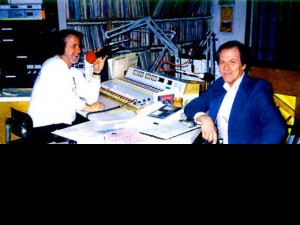ozhist.jpg

During the week leading up to our birthday, our web team compiled and composed a number of Facebook posts based on archival images from our past: posters, pictures, floor plans & more. They're collected here, with a few narrative embellishments.
In 1976, brothers Walter and Jerry Brock moved to New Orleans with the intent of founding a community radio station.
On September 21, 1976, the Nora Blatch Educational Communication Foundation was founded for this purpose.

After four years of organizing, fundraising, and review by the FCC, WWOZ first went on the air on December 4, 1980.
For the first broadcast, one song was aired repeatedly on a tape loop for 24 hours, on a reel-to-reel player located in the transmitter shed at the base of the tower at Nine Mile Point in Bridge City: "Keep Cool, Babylon," by Ras Michael and the Sons of Negus.
WWOZ's first studios were in an apartment above Tipitina’s nightclub. Photo of Walter Brock at the original WWOZ studios, by Dan Meyer.

Here's a schedule of WWOZ's first year of programming in 1981, when the station broadcast from 9 am to 10 pm.
Some things have stayed the same over the years: Traditional Jazz was at 9 am. Evening shows were R&B/early rock and roll. Swing music was Sunday evening, plus Latin music Saturday at midday, and Cajun music Sunday at midday.
And Hazel was there, of course:

From WWOZ's past: the Fall 1981 "All Right!" newsletter, announcing WWOZ's 1st Birthday Celebration!

(Images courtesy the New Orleans Jazz & Heritage Foundation Archive.)
A poster from a WWOZ concert - in April 1982, when 'OZ was less than two years old! Photographer (and WWOZ show host) Dan Meyer says: "Signed by a number of the performers, including Chuck Carbo, Ernie K-Doe, Bobby Mitchell, Earl King, Benny Jones, King Floyd. Unfortunately it's in poor condition; this was in my attic when my roof blew off during Katrina -- in the corner where some roof was left. Salvageable, though barely. Oh well."

Looking back during WWOZ's birthday week, we found this amazing staff photo from 1983, taken above Tipitina's by photographer Donn Young of New Orleans Magazine. It's filled with WWOZ legends, including Ernie K-Doe, Duke-a-Paducah and BB, Von Turk, Billy Delle, Mike Gourrier, Jivin' Gene Mark... and two show hosts who are still going strong at WWOZ!

Here's the key to the WWOZ 1983 show host and volunteers photo (taken from an issue of the WWOZ newsletter, "All Right!").
And the two show hosts currently active are Hazel the Delta Rambler (Sundays 10 am to noon) and Dan Meyer (Traditional Jazz on Mondays from 9 to 11 am.)

(Images courtesy Dan Meyer.)
WWOZ on a Friday night in 1984, upstairs at Tipitina's: Duke-a-Paducah, Leo Zuperku, BB, and Jivin' Gene Mark.
From Wavelength Magazine in May of 1984.


WWOZ had always wanted to have a studio in Armstrong Park, even in the planning days before establishing a studio above Tipitina's. Treme was the musical heart of the city, and the station wanted to be in the middle of it.
So in 1984, WWOZ was finally able to move into the three-room Kitchen Building in Armstrong Park. The station held a parade with 90.7 musicians in it to officially "move" the station from Tipitina's, at Napoleon and Tchoupitoulas, all the way to Treme. (There was one young person in the parade who constituted ".7" of a musician.)
WWOZ's new home consisted of a production room on the lower floor and the air studio on the upper floor. Administrative offices were actually in a building on St Philip Street across from the park. WWOZ remained in this building until 2005, when the city evacuated for the storm.
Here's the floor plan for the air studio. Note the two reel-to-reel players, three turntables, and cart machines. No CD player yet!
Show Host Hazel Schlueter: "The turntables were on the left which was just right. The cabinet was isolated from the rest of the counter so the records did not skip. The control board looked like a rocket ship control from Captain Video. The counter height was perfect for me so I could either sit or stand and there was space to put your papers and stuff, and windows that opened, and a court yard and parking, and a great record library and the sounds of so many musical memories."
(Image courtesy the New Orleans Jazz & Heritage Foundation Archive.)


In 1986, WWOZ's license was transferred from the Nora Blatch Educational Communication Foundation to the New Orleans Jazz & Heritage Foundation. This brought WWOZ financial stability, as well as many new opportunities to broadcast New Orleans music and culture.
From the article: "Ken Devine, WWOZ's station manager, said the agreement is 'a quantum leap. Out statements of purpose are so similar as to be almost identical.'"

(Image courtesy the New Orleans Jazz & Heritage Foundation Archive.)
Sometimes you hear longtime WWOZ fans and volunteers refer to the mysterious 1987 "BARGE INCIDENT."
Tugboat + barge + 300 ft radio antenna tower = bad news. It happened on March 30, 1987 (in the middle of pledge drive!), and it took WWOZ off the air for three months. Eventually WWOZ's transmitter was moved to an antenna on a building in the CBD of New Orleans. Read the details here, from this 1988 WWOZ newsletter.
A longer and more detailed version, written by one of WWOZ's broadcast engineers who actually witnessed the tower falling, and who was handcuffed at the scene by police who wanted to arrest him for sabotage, can be found here: http://www.well.com/user/dmsml/wvog.html

(Image courtesy the New Orleans Jazz & Heritage Foundation Archive.)
1980s History:
"WWOZ is the greatest station in the universe."
- Andy Warhol
In early 1989, Bob Dylan recorded his album "Oh Mercy" in New Orleans, with producer Daniel Lanois -- and he became a WWOZ fan. From his autobiography, Chronicles: Volume I:
"At the house on Audubon Place the radio was always on in the kitchen and always tuned to WWOZ, the great New Orleans station that plays mostly early rhythm and blues and rural South gospel music. My favorite DJ, hands down, was Brown Sugar, the female disc jockey. She was on in the midnight hours, played records by Wynonie Harris, Roy Brown, Ivory Joe Hunter, Little Walter, Lightnin' Hopkins, Chuck Willis, all the greats. She used to keep me company a lot when everyone else was sleeping. Brown Sugar, whoever she was, had a thick, slow, dreamy, oozing molasses voice--she sounded as big as a buffalo--she'd ramble on, take phone calls, give love advice and spin records. I wondered how old she could be. I wondered if she knew her voice had drawn me in, filled me with inner peace and serenity and would upend all my frustration. It was relaxing listening to her. I'd stare at the radio. Whatever she said, I could see every word as she said it. I could listen to her for hours. Wherever she was, I wished I could put all of myself in there.
"WWOZ was the kind of station I used to listen to late at night growing up, and it brought me back to the trials of my youth and touched the spirit of it. Back then when something was wrong the radio could lay hands on you and you'd be all right......
"New Orleans had the best radio stations in the world."
In March of 1987 WWOZ's antenna tower at Nine Mile Point in Bridge City had a spectacular collapse, taking the station off the air for three months. This was the map of WWOZ's signal reach when the transmitter was moved to the roof of an office building in the CBD. WWOZ's signal was 4,000 watts:

(Image courtesy the New Orleans Jazz & Heritage Foundation Archive.)
In 1994, WWOZ issued the first of a continuing series of live music CDs as "thank-you" gifts for its members who pledge, made up of live performances of the best musicians in New Orleans, recorded at Jazz Fest and elsewhere. Only 500 copies were made of the first edition.
There have been 39 CDs in the series so far, and they have never been available for sale. And when they're gone after each pledge drive, they're gone -- they will never be reissued. The only way to get this music is by supporting WWOZ!
(Needless to say, the earliest editions are prized by collectors. And every now and then you hear someone brag that they have the entire set -- except one they lent to an ex and never got back.)

(Image courtesy the New Orleans Jazz & Heritage Foundation Archive.)
In 1995, WWOZ launched its website, wwoz.org.
In 1996, WWOZ began an online stream, which was an immediate success, helping create a following for WWOZ all over the world.
In 2013, WWOZ has streaming listeners in every state in the US, and in over 200 countries.
The 1990s passed, and show hosts, volunteers, staff, and musicians came and went. WWOZ remained in Armstrong Park, and its Internet presence grew.
This was WWOZ's program schedule in 2004:

(Image courtesy the New Orleans Jazz & Heritage Foundation Archive.)
2005 happened. WWOZ's survival after Hurricane Katrina and everything that followed it was a triumph of community radio, made possible by the dedication and hard work of staff and volunteers, and by the support of thousands of music lovers and dozens of radio stations all over the world.
As for the details, this long May 3, 2006 article in the Times-Picayune, by Dave Walker, tells the basic story, including personal accounts from DJ Soul Sister, Hazel the Delta Rambler, Mr Jazz, and Black Mold. http://www.nola.com/tv/index.ssf/2006/05/the_wizards_of_oz_while_showca.html
Special thanks to Dave Walker of the Time-Picayune for making this article available at NOLA.com.

After the storm, radio stations across the country and around the world stepped up to assist WWOZ in different ways, without being asked.
This group of stations has been informally named "The Katrina Network." And after Hurricane Sandy took WFMU off the air in New York City in 2012, WWOZ and other stations in the group stepped forward again to help keep them going.
So when you see "The Katrina Network" memorialized on the back of one of WWOZ's broadcast trucks, that's the story behind it. It can't ever repay the debt, but it does acknowledge it.

On December 4, 2010, WWOZ celebrated its 30th birthday, with a second line parade. Photo by Monique Dupas.

On March 9, 2013, a helicopter lifted this new transmitter to the top of a building high above Canal Street in New Orleans.
This was part of the still-ongoing process of increasing WWOZ's FM signal from 4,000 watts to 100,000 watts -- so WWOZ can bring New Orleans music and culture to communities on the North Shore of Lake Pontchartrain, in coastal areas, in Mississippi, and beyond!

A great big THANK YOU to everyone who celebrated WWOZ's 33rd Birthday with us this week! Whether at the Birthday Bash at Tipitina's, or at the Block Party at the Treme Speakeasy, or even just by following along to the radio and the Internet, we had a great time.
The best part of a birthday party is realizing how much your friends love you. And we love you right back!
WWOZ's own birthday cake at Tipitina's, provided by the New Orleans Cake Cafe. Photo by Ryan Hodgson-Rigsbee rhrphoto.com

Special thanks to the New Orleans Jazz & Heritage Foundation Archive and Dan Meyer, for providing much of the material for these features.



















